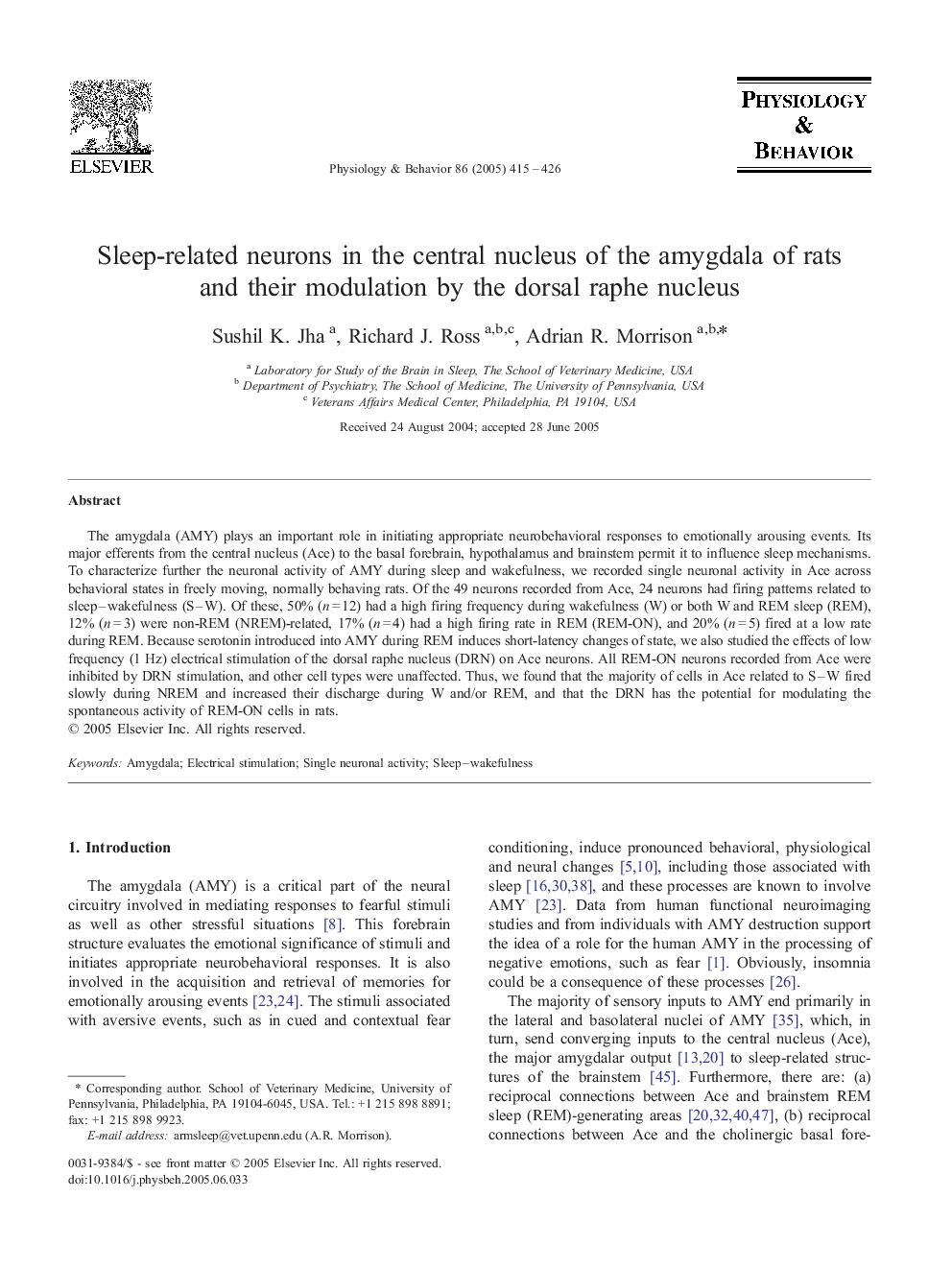| Article ID | Journal | Published Year | Pages | File Type |
|---|---|---|---|---|
| 9149530 | Physiology & Behavior | 2005 | 12 Pages |
Abstract
The amygdala (AMY) plays an important role in initiating appropriate neurobehavioral responses to emotionally arousing events. Its major efferents from the central nucleus (Ace) to the basal forebrain, hypothalamus and brainstem permit it to influence sleep mechanisms. To characterize further the neuronal activity of AMY during sleep and wakefulness, we recorded single neuronal activity in Ace across behavioral states in freely moving, normally behaving rats. Of the 49 neurons recorded from Ace, 24 neurons had firing patterns related to sleep-wakefulness (S-W). Of these, 50% (n = 12) had a high firing frequency during wakefulness (W) or both W and REM sleep (REM), 12% (n = 3) were non-REM (NREM)-related, 17% (n = 4) had a high firing rate in REM (REM-ON), and 20% (n = 5) fired at a low rate during REM. Because serotonin introduced into AMY during REM induces short-latency changes of state, we also studied the effects of low frequency (1 Hz) electrical stimulation of the dorsal raphe nucleus (DRN) on Ace neurons. All REM-ON neurons recorded from Ace were inhibited by DRN stimulation, and other cell types were unaffected. Thus, we found that the majority of cells in Ace related to S-W fired slowly during NREM and increased their discharge during W and/or REM, and that the DRN has the potential for modulating the spontaneous activity of REM-ON cells in rats.
Related Topics
Life Sciences
Biochemistry, Genetics and Molecular Biology
Physiology
Authors
Sushil K. Jha, Richard J. Ross, Adrian R. Morrison,
